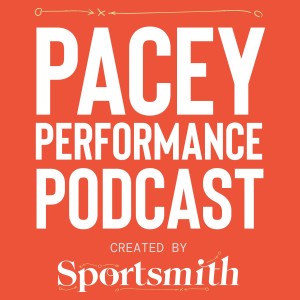
Managing T-junction injuries and location based hamstring rehab with Fearghal Kerin
 2024-08-08
2024-08-08
In this episode of the Pacey Performance Podcast, Fearghal Kerin, Rehabilitation Physiotherapist, Chelsea Football Club, discusses the growing prevalence of T-junction hamstring injuries and the importance of location-specific rehabilitation strategies.
Fearghal outlines his background, highlighting his PhD focused on hamstring injuries and his work in professional sports, including football and rugby. He emphasizes the evolving role of strength and conditioning coaches in injury rehabilitation and the need for a nuanced approach to managing hamstring injuries based on their anatomical location.
Hamstring injuries are classified into sprint-type and stretch-type, with the T-junction—a confluence of the long and short head of the biceps femoris—being particularly susceptible to injury. This area is complex due to its dual force vectors, dual nerve supply, and bi-articular function, making it challenging to rehabilitate.
Fearghal discusses the necessity of considering biomechanical positions and sport-specific actions when diagnosing and treating hamstring injuries. He highlights that traditional low-level resistance exercises may not effectively prepare athletes, advocating for high-intensity conditioning contractions instead.
He stresses the importance of eliminating MRI signs before returning to play, as unresolved edema and tension can increase the risk of reinjury. Specific tissue loading and exercise selection are crucial, with a focus on exercises that respect the injury’s anatomical structure.
Research indicates that T-junction injuries, though complex, do not necessarily lead to worse outcomes than other hamstring injuries if managed correctly. This podcast concludes with a call for more research and personalized rehabilitation strategies to optimize recovery and prevent recurrence.
Main talking points:
- Implement location-specific rehab for hamstring injuries
- Focus on high-intensity conditioning contractions
- Diagnose hamstring injuries using biomechanical analysis
- Tailor rehab exercises to injury’s anatomical location
- Eliminate MRI signs before return to play
- Use sport-specific actions in rehabilitation plans
- Avoid low-level resistance exercises for preparation
- Address neuromuscular factors in hamstring rehab
- Consider trunk rotation in injury assessments
- Control unanticipated movements during rehab
- Ensure sequential imaging for accurate injury management
- Extend rehab for field sport athletes as needed.
More Episodes
Create your
podcast in
minutes
- Full-featured podcast site
- Unlimited storage and bandwidth
- Comprehensive podcast stats
- Distribute to Apple Podcasts, Spotify, and more
- Make money with your podcast
It is Free
- Privacy Policy
- Cookie Policy
- Terms of Use
- Consent Preferences
- Copyright © 2015-2024 Podbean.com



